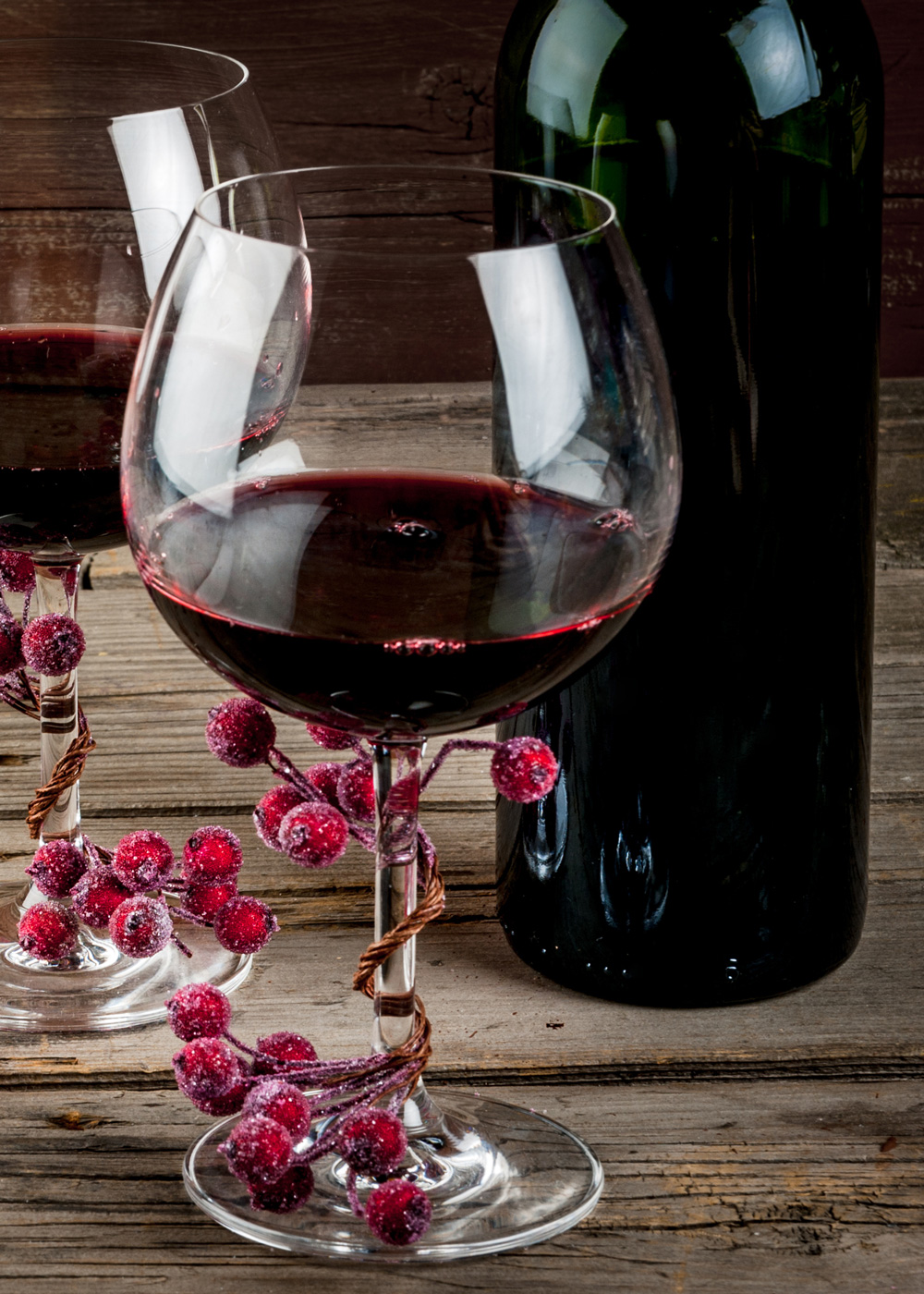As the weather turns cold and the days shorten, we start looking forward to festive celebrations and rich, comforting foods. Here are some recommendations for wines to enjoy through the chilly winter months.
Dry Portuguese Reds
The Duero River Valley in Portugal is famous for producing Port, a sweet, highly alcoholic red wine fortified with brandy. Many wine lovers are unaware that Portugal also produces wonderful, full-bodied, dry reds that rival the best in the world. Most of these dry red wines are blends of local grapes such as Touriga Franca, Tinta Roriz, and Tinta Cão. The grape most likely to appear in a single varietal bottling is Touriga Nacional, which, as its name suggests, is considered the national grape of Portugal. Dry reds from the Duero Valley tend to be fruit-forward with pronounced, ripe tannins, a full body, and a dark color. Flavors include black and red fruits, baking spices, chocolate, and oak. Portuguese Reds usually have moderate acidity and a smooth mouthfeel that make them approachable for lovers of California wine. If you are a Napa Cab fan and would like to try something different, a Douro River Red might be perfect for you!
Grenache
Among the world’s most planted grapes, Grenache is relatively unknown – particularly in comparison with varieties like Cabernet Sauvignon or Pinot Noir. Grenache thrives in warm-to-hot climates, and can be made in an amazing variety of wine styles from light and delicate like Pinot Noir, to almost black and syrupy like Zinfandel. It is most famous in the Southern Rhône Valley in France, where it forms the basis of most Côtes du Rhône and Châteauneuf-du-Pape blends, as well as Spain, where it is known as Garnacha – the main grape used in the Priorat region. Other areas for Grenache production include Australia, and the Island of Sardinia, where it is known as Cannonau. Despite the huge variation in style, most Grenache features red fruit flavors like strawberry and cranberry, as well as a bright ruby color and generous flavor intensity.
Amarone della Valpolicella
The Veneto region in northeastern Italy is home to a family of wines called “Valpolicella,” made from a blend of local grapes. Amarone is the most opulent of the Valpolicella wines. It’s produced by drying grapes to reduce their water content and concentrate their flavors. Few dry wines have such a full, rich texture. Flavors of plum, raisin, cinnamon, mocha, and dried cherry are typical. Amarone can be enjoyed on its own, or paired with dishes that feature thick, somewhat sweet sauces. It would be delightful with duck or pork in a reduced fruit sauce.

Zweigelt
The wines of Austria and Germany are growing in popularity in the United States, but most of the examples imported from those countries are white. Zweigelt (pronounced “TSVYE-gelt”) is one of the highest-quality red grapes of Austria, and is a rare treat here in the US. It is medium-bodied, somewhere in between Pinot Noir and Merlot, and has a zesty, wildberry character that is unique and delicious. It is wonderful with food, as it pairs nicely with German and Austrian cuisine, as well as poultry dishes and bean or vegetable soup.
White Burgundy
Many of the foods that we crave in the winter tend to be on the richer side, and those that feature creamy ingredients are perfect with Chardonnay. If you’re preparing dishes such as chicken alfredo, mashed potatoes, clam chowder, or green bean casserole, you should consider a white Burgundy. White Burgundy – with very few exceptions – is made from 100% Chardonnay. Chardonnay from Burgundy tends to be drier and more crisp than its counterparts from California, and are marvelous with food.
Cava
The holidays are a good time to celebrate with sparkling wine. Everyone knows that Champagne adds a festive touch to your parties, but sometimes you might want a less expensive option. Cava is the Spanish term for sparkling wine made with the same method as Champagne. Cava can be produced in regions all over Spain, but most commonly comes from the area around Barcelona. They use several local grapes, Macabeo, Parellada, and Xarello along with Chardonnay for blending. You can find a variety of styles modeled after Champagne, including Brut and Rose, as well as sweeter wines. Cava will add sparkle to your celebrations without breaking the bank.
So throw on your warmest blanket, find a window with a view of the great outdoors, and curl up with a glass of wine and a good book! Want suggestions on what to read? Check out our blog on Building a Library: Essential Wine Books.



